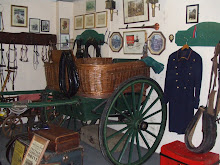
 During the 1800’s, horse brasses developed from the horse amulets, which date back some 2000 years, to the intricate shaped patterns with which we are familiar today. The earlier types were actually made out of bronze, then brass covered lead, before pure brass was used.
During the 1800’s, horse brasses developed from the horse amulets, which date back some 2000 years, to the intricate shaped patterns with which we are familiar today. The earlier types were actually made out of bronze, then brass covered lead, before pure brass was used.The majority of the designs date from the heyday of their popularity, from 1850 until the beginning of the First World War. Many of these designs are embodied in the conventional sun or crescent shape. For the first jubilee of Queen Victoria, the first of a long series of commemorative brasses depicting royalty was produced, a tradition still carried on today.
Many brasses have been produced to commemorate a show or parade,the RSPCA have issued their own
brasses (in actual fact they were made out of pewter, a white metal) since 1896 and many modern-day parades and shows still keep up this tradition.
For instance Barley Saturday in Cardigan, West Wales was originally a hiring fair and has now developed into a parade of breeding stock and driving vehicles.
Each year every participant is presented with a horse brass, dated and suitable inscribed in Welsh, Aberteifi – Dydd Sadwrn Barlus.
inscribed in Welsh, Aberteifi – Dydd Sadwrn Barlus.
While the most valuable brasses are those produced prior to 1900 and show signs of wear from having been used on horses, there is nonetheless a collectors market for more recently cast brasses. By this I do not mean the cheap mass
produced stamped brass which is so often seen sold as souvenirs but the carefully designed and cast brasses usually of a numbered edition and with the
maker identified on the back.
Each year every participant is presented with a horse brass, dated and suitable
 inscribed in Welsh, Aberteifi – Dydd Sadwrn Barlus.
inscribed in Welsh, Aberteifi – Dydd Sadwrn Barlus.While the most valuable brasses are those produced prior to 1900 and show signs of wear from having been used on horses, there is nonetheless a collectors market for more recently cast brasses. By this I do not mean the cheap mass
produced stamped brass which is so often seen sold as souvenirs but the carefully designed and cast brasses usually of a numbered edition and with the
maker identified on the back.

